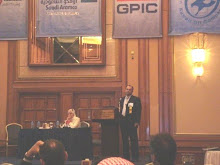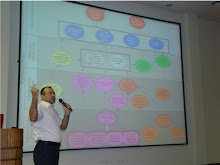The PMBOK Guide, “The Guide to the Project Management Body of Knowledge”, was published by The US Project Management Institute (PMI) while Prince2, “Project in Controlled Environment Version2”, was produced by the UK Office of Government Commerce’s (OGC) (Bentley C, 2006; Bailey, 2003). Due to their diversified nature, the comparison process is not fairly applicable: PMBOK is a descriptive knowledge base while Prince2 is a prescriptive methodology. However, they are the most popular alternatives for organisations to espouse; a choice to be based on “comparison” (Bentley, 2006).
A detailed comparison of the two methodologies covers most aspects: Lifecycle, stages, phases, governance, frameworks, Knowledge area based, planning and scheduling ।
These two methodologies are not alone! OPREP, Railcorp-PMM, MSF, Ad-PMM, SPS-PMM, are examples of other methodologies built by organisation according to their needs (PMGP6869, 2003; 4PM, 2006; SPS, 2006). Additionally, a “marriage” is being suggested between PMBOK and Prince2. I tend to agree with this trend basing on the above comparison that showed how knowledge based and comprehensive PMBoK processes complements with perspectives and pragmatic Prince2 nature (Yeong, 2006; Bailey, 2003; Bentley, 2006; Wideman, 2002). Getronics (Bailey, 2003) is an example of successful implementation of combined approach.
Reflecting on some case studies, I suggest adopting PMBoK methodology with four phases in Suncorp Stadium and Youth Club Redevelopment (in my PMGT5872 Final report) characterised by clear end-to-end requirements। However, for ‘A framework to Implementing Strategies’ (Okumus, 2003), I recommend a methodology with stage gate approach as it integrates with feedback loops and selected metrics “health of organisation and enterprise” (El Barakeh et al, 2006) and the “deliberate change iterations” discussed in Question 2A below. Furthermore, projects alignment with strategy can be assessed at these stages as shown in fig.1 below. Therefore, I believe that Prince2 or a combination of Prince2 and PMBoK can be implemented in these cases; otherwise the organisation can build or modify its own methodology (PMGT6869, 2003).

Figure: stage gates to assess alignment with business cases adopted from Seigelaub, 2006
The same applies for ‘Building the Olympic Dream’ (Pitsis et al, 2003) especially due to lack of upfront planning, high exploration, agility requirements, innovative nature, partnership, to name but a few; situations that are not in favour of PMBoK methodology alone.
Finally, it is worth noting that globalisation and acquisition make the combination of the two methodologies more favourable (Bailey, 2003).
Regards,
Samer

















This is an incredible post about PRINCE2® Certification in Canada Getting such a wide range of benefits is really amazing.
ReplyDelete